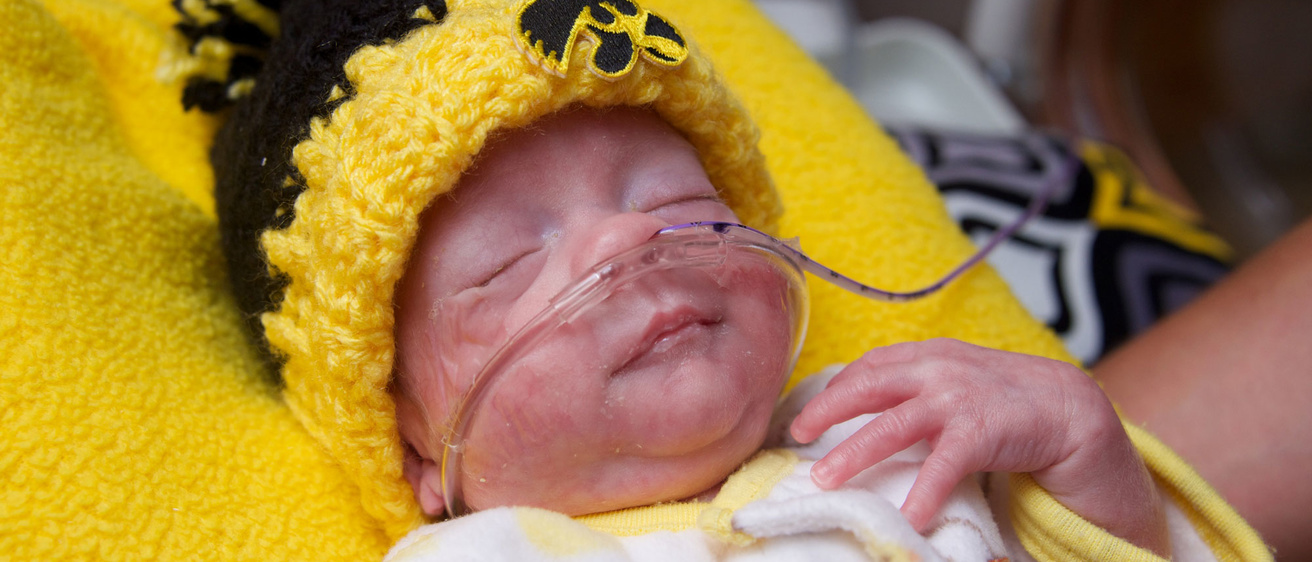Whether the youngest preterm infants receive potentially lifesaving treatment differs among major academic medical centers nationwide, and that difference could determine whether these tiniest of infants survive, according to a University of Iowa study published in the New England Journal of Medicine.
UI researchers Matthew Rysavy, a senior medical student, and Edward Bell, professor of pediatrics in the Stead Family Department of Pediatrics, studied the cases of nearly 5,000 infants born before 27 weeks gestation at 24 academic hospitals participating in the Neonatal Research Network between 2006 and 2011. The network is part of the Eunice Kennedy Shriver National Institute of Child Health and Human Development.
Their results will be published in the New England Journal of Medicine on May 7.

Rysavy, Bell, and their collaborators studied the births to determine which extremely preterm infants received active care—efforts to save the life of the infant—and which received only comfort care—keeping the infant comfortable until he or she passed away.
“We were interested in the differences in outcomes that exist for the earliest preterm infants among U.S. academic medical centers,” Rysavy says. “There are large differences in outcomes like mortality and childhood delays and disabilities, and we looked at this variation and wanted to understand why it exists.”
What they found was that much of the difference in outcomes could be explained by whether efforts were made to save the life of the youngest infants after they were born. At most centers, active care was not provided for infants born before 22 weeks into pregnancy. (A usual term pregnancy lasts about 40 weeks.) Active care was provided for all infants born at or after 25 weeks of pregnancy at almost all hospitals. However, between these two extremes—for infants born 22, 23, or 24 weeks into pregnancy—there was substantial variation among hospitals in whether infants were actively treated.

Infants born at 22 weeks into pregnancy received potentially lifesaving treatment after birth at fewer than one in four hospitals; the decision to apply the treatment took into account the mother’s health or age, the infant’s birth weight, or whether the mother received prenatal care. Infants born at 23 weeks received the same treatment at one in three hospitals. These variations in treatment influenced hospital rates of survival and of early childhood outcomes such as developmental delay and cerebral palsy.
Because the approaches to active treatment vary among hospitals, “there is a real problem if doctors are talking to parents about their baby’s chances using outcome data that include babies for whom no active treatment was offered,” Bell says. “What parents want to know is, ‘If our baby is treated, what are her chances?’”
By illustrating how differences in the approach to treating infants born at 22, 23, and 24 weeks relate to hospital outcomes, the study provides information that can help improve the evidence used to make decisions about infants’ care. Ultimately, the care of each individual infant must be decided by the parents and doctors based on the best available information.
